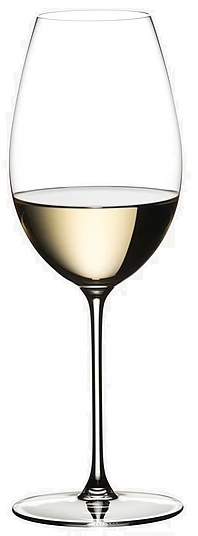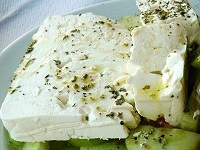Colli di Luni Vermentino (Italy)
Colli di Luni Vermentino DOC is a white wine from the coastal hills around Massa and Carrara in northwest Italy.
It is made from minimum 90% Vermentino grapes.
Colli di Luni Vermentino Flavors
Salinity, Lime, and Green Apple are typical Colli di Luni Vermentino flavors.
With delicate hints of Pine Nuts, Basil, and Minerals.
The bitter aftertaste reminds of the white peel in a grapefruit.
Lemon |
Lime |
Apple |
Pear |
Peach |
Grapefruit |
Daffodil |
Rosemary |
Pine Nuts |
Basil |
Almond |
Salt |
Colli di Luni Vermentino Profile
Colli di Luni Vermentino is a light and dry white wine with good acidity:
| SUGAR: | Dry (3 g/l) |
| BODY: | Light |
| FRUIT: | Medium - Low |
| ACIDITY: | High |
| ALCOHOL: | 12-13% ABV |
| Serving temperature: 8-10°C (46-50°F) | |
Colli di Luni Vermentino Food Pairing
Colli di Luni Vermentino is a typical Fish Wine, with Pine Nuts and Basil Aromas. In Liguria it is an excellent pair to Ligurian Pesto.
Aperitif |
Olive Oil |
Olives |
Tapas |
Salads |
Vegetables |
Fish |
Fish and Chips |
Seafood |
Fish Soup |
Spaghetti |
Pasta |
Excellent Pairings
Mediterranean Cuisine.
Italian/Japanese Fusion. Sushi. Tempura.
Salads. Olive Oil. Tomatoes.
Vegetables. Artichoke. Arugula. Asparagus.
Fennel. Pesto. Spinach. Zucchini.
Rich Seafood. Salmon. Halibut. Trout.
Fried Calamari. Crab. Lobster.
Seafood Pasta. Spaghetti with Clams.
Tomato based Sauces.
Italian Specialities
Spaghetti alle Vongole.
Linguine with Crab.
Fritto Misto di Mare.
The Ideal Glass for Colli di Luni Vermentino

|
The Sauvignon Blanc glass is smaller than a Chardonnay glass.
It has a more narrow bowl to concentrate the crisp and citrusy aromas of a zesty and fruity white wine. |
Colli di Luni Vermentino Cheese Pairing
Opt for cheeses with moderate saltiness and creaminess to balance the wine's acidity. You can also add accompaniments like fresh fruits (grapes, apples, pears), nuts (almonds, walnuts), or a light drizzle of honey to enhance the pairing.
Fresh and Mild Cheeses
Mozzarella: Its delicate flavor pairs well with the wine's lightness.
Ricotta: Especially good if served with a drizzle of honey or fresh fruits.
Goat Cheese (Feta): The tanginess complements the subtle fruit notes in Colli di Luni Vermentino.
Soft Cheeses
Fontina: Its nutty, buttery qualities make a good match.
Brie: The creamy texture and mild flavor work beautifully with Colli di Luni Vermentino.
Primo Sale: Similar to Brie but more flowerly, herby, and salty.
Semi-Soft Cheeses
Asiago: Lightly aged Asiago adds a complementary tang to the wine.
Gruyère: Mildly nutty and sweet, enhancing the wine's subtlety.
Blue Cheeses (for contrast)
Robiola: Its mild creaminess contrasts nicely without overpowering the wine.
If You Like Colli di Luni Vermentino
You May Also Like:
Colli di Luni DOC
Colli di Luni is an DOC appelation located around Massa and La Spezia in northwestern Italy.
The DOC is a part of both Liguria and Toscana.
| Bianco DOC | Min 35% Vermentino. 25–40% Trebbiano. Max 30% OAWG |
| Albarola DOC | Min 85% Albarola + OAWG |
| Vermentino DOC | Min 90% Vermentino + OAWG |
| Superiore DOC | 100% Vermentino |
About Vermentino
Vermentino is a white wine grape from the island of Sardinia (Sardegna).
The grape continues into the Italian Ligurian Riviera, the famous Cinque Terre, north inland in Piemonte and south along the Tuscan coast. From Lunigiana hills behind Versilia to Bolgheri, and Maremma including the islands Elba and Giglio.
Vermentino is also found along the coast of Southern France, from the Pyrenees to the Cote d' Azur, and the island of Corsica.
Italy stands for about 85% of the world production, and about 10% is produced in France (Provence and Corsica).
The two bigg islands, Sardegna and Corsica, produce the best structured and aromatic Vermentino. Often full bodied, powerful with a persistent taste. A big contrast to the common Vermentino with a medium structure, light and easy to drink.
The main characteristic of Vermentino is its perfume: Mediterranean aromatic herbs such fresh thyme, oregano, mint, lemon balm, rosemary, basil, pines. And its salinity.
Depending on the area of origin, Vermentino can have white floral notes such jasmine or fruity notes such citrus, peach, apple and exotic fruit.
Vermentino In Sardegna (Sardinia)
In Sardegna, Vermentino is the main white grape. It has two appellations:
- Vermentino di Sardegna DOC
- Vermentino di Gallura DOCG (The island's most famous wine)
Thanks to the hot and favourable climate, Vermentino wines from Sardegna are often richer with a fuller body than Ligurian Vermentino.
The wines from Sardegna pairs beautifully with the local fish and seafood.
Vermentino In Liguria
In Liguria, Vermentino is the main grape variety. And there are a few DOCs:
Colli di Luni DOC (Hills of the Moon) is known for its freshness and minerality. The proximity of the Massa and Carrara marble mountains surely helps. The DOC is located on the border between Liguria and Tuscany, with the majority of the vineyards in Liguria.
The Ligurian Vermentino has a medium structure and is normally a little lighter than the wines from Sardegna (Sardinia).
Along the coast, Vermentino vines are found in the amazing cliffside vineyards of Cinque Terre. And hiking the Cinque Terre, through terraced vineyards, and the view of its dramatic coastline is unforgettable.
The Cinque Terre DOC is a white wine made of local grapes such Bosco (min.40%), Albarola and Vermentino (max.40%)
Portofino DOC is located near Genova in the Tigullio Gulf and the main white grapes are Vermentino, Bianchetta Genovese and Scimiscià.
Vermentino In Toscana
In Toscana, the climate is warmer than in Liguria, and the vineyards produce a richer Vermentino.
Winemaking techniques like skin and lees contact, together with barrel aging create a richer body with more complexity. Vermentino wines from Bolgheri (Bolgheri Vermentino DOC) is often compared with French Viognier.
Tuscan Vermentino has well defined aromas and a characteristic saline taste, a perfect match to Grilled Fish, Baked Seabass and Turbot or "Orata all'Acquapazza" (Sea Bream poached with fresh cherry tomatoes).
Vermentino In Piemonte
In Piemonte, Favorita is a biotype of Vermentino. It grows primarily in the areas around the city of Alba, in the Roero zone, and the Alta Valle Belbo area.
Favorita wines are known for good acidity and intense Pear notes.
Vermentino In France
In France, Vermentino is called Rolle and it is often blended.







